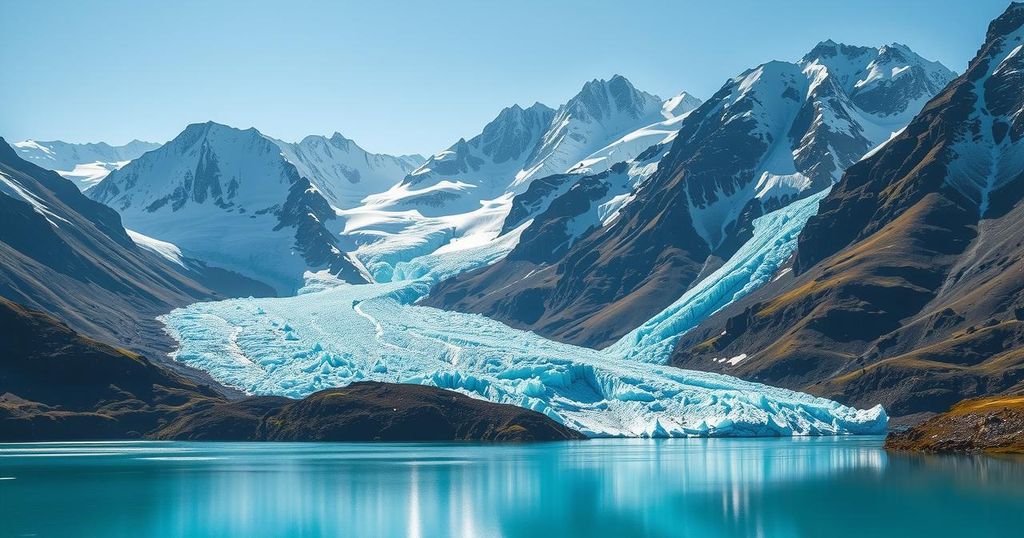Nepal’s Sagarmatha Sambaad: Addressing Climate Change and Economic Potential of Glaciers
Nepal’s Sagarmatha Sambaad kicks off today, focusing on climate change and its impact on the Himalayas. The summit seeks to address the urgent issues of retreating glaciers and emergence of glacial lakes, while also exploring their economic potential. Despite their threats, the Himalayan glaciers represent opportunities for sustainable development and tourism. Collaborative efforts can channel economic benefits while mitigating risks associated with climate change.
The inaugural edition of the Sagarmatha Sambaad, an important dialogue initiative from Nepal’s foreign ministry, commenced in Kathmandu today, May 16th. This three-day summit, titled “Climate Change, Mountains, and the Future of Humanity,” will zero in on the crucial challenge of climate change. There is an opportunity here to separate the majestic Himalayas from money-making endeavors, shifting the focus instead to sustainability and environmental preservation.
The Himalayas house the largest ice reserves beyond the Polar Regions, supplying water to over a billion people in the Brahmaputra, Ganges, and Indus river basins. As glaciers retreat at an alarming rate, the situation is dire. Current studies show the mean annual temperature in Nepal’s Himalayan region is rising faster than the global average, by about 0.06°C annually. Heightened temperatures have led to more glacial lakes, which, while showcasing the beauty of these landscapes, also raise risks related to glacial lake outburst floods (GLOF) – both of which threaten communities and infrastructure.
Further complicating matters, Nepal is facing visible glacier recession. Data reveals a substantial 24% reduction in glacier area and a staggering 29% loss of ice reserves between 1977 and 2010. Interestingly, the overall number of glaciers has increased, from 3,429 to 3,808 during this time, which researchers attribute to glacier fragmentation. On average, the glaciers are shrinking by about 38 km² annually, a trend that poses serious implications for water sources, ecosystems, and the rising likelihood of catastrophic events like avalanches.
Recent analyses highlight that Nepal hosts over 2,000 glacial lakes, with their area expanding at a rate of 0.83% annually, influencing the risks associated with GLOFs. A joint study by ICIMOD and UNDP mapped out 3,579 glacial lakes across critical river basins, recognizing that some, especially moraine-dammed lakes, could be hazardous. With 21 potentially dangerous glacial lakes identified in Nepal, the risk of GLOFs poses a significant threat particularly along the China-Nepal border, where lakes can be even more precarious.
Despite being viewed primarily as indicators of climate change or hazards, glaciers and their lakes hold socio-economic and cultural significance. They are crucial water sources and time-honored pilgrimage destinations for both Hindu and Buddhist communities. There is potential for the development of micro-hydroelectricity systems using these vital resources to combat water scarcity in Nepal. Additionally, these sites offer magnificent landscapes for trekking and unique winter sports opportunities, similar to those in the Andes and the Alps.
The Sagarmatha Sambaad serves as a crucial platform to drive forward Nepal’s climate initiatives. By focusing on cryospheric monitoring and risk mitigation strategies, alongside promoting tourism in glaciated regions, those involved aim to turn the threats posed by climate change into avenues for revenue generation. Importantly, integrating remote sensing technologies and developing a robust database on glacier dynamics is critical for ensuring the resilience of communities that rely on these sources. Engineering solutions to monitor and manage lake levels, as well as advocating for international cooperation on climate justice, will be vital in addressing these challenges.
In summary, the Sagarmatha Sambaad presents a unique opportunity for Nepal to transition from a reactive stance on climate threats to a proactive approach, leveraging its glacial resources for sustainable development. It stands as a call to action for local and global communities to engage in strategies that safeguard both the environment and livelihoods for future generations.
The Sagarmatha Sambaad aims to highlight the urgent issues of climate change affecting Nepal’s glaciers while also showcasing their potential as resources for sustainable development. As glaciers recede, they pose significant risks, such as increased GLOFs that threaten communities. However, with the right strategies — from enhanced monitoring to promoting responsible tourism — Nepal can harness its glacial wealth responsibly. The summit marks a promising step forward for climate resilience and economic opportunity in the Himalayan region.
Original Source: myrepublica.nagariknetwork.com




Post Comment